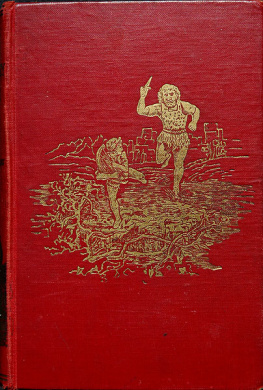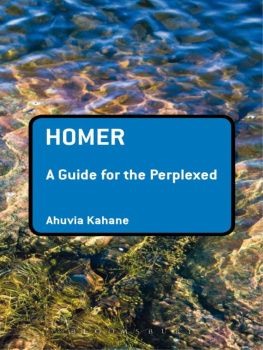Footnotes:
{1} Poems by Ernest Myers. London, 1877.
{2} A very pleasing account of the scenery near Oxford appeared in the Cornhill for September 1879.
Oxford
By Andrew Lang
PREFACE
These papers do not profess even to sketch the outlines of a history of Oxford. They are merely records of the impressions made by this or that aspect of the life of the University as it has been in different ages. Oxford is not an easy place to design in black and white, with the pen or the etcher's needle. On a wild winter or late autumn day (such as Father Faber has made permanent in a beautiful poem) the sunshine fleets along the plain, revealing towers, and floods, and trees, in a gleam of watery light, and leaving them once more in shadow. The melancholy mist creeps over the city, the damp soaks into the heart of everything, and such suicidal weather ensues as has been described, once for all, by the author of John-a-Dreams. How different Oxford looks when the road to Cowley Marsh is dumb with dust, when the heat seems almost tropical, and by the drowsy banks of the Cherwell you might almost expect some shy southern water-beast to come crashing through the reeds! And such a day, again, is unlike the bright weather of late September, when all the gold and scarlet of Bagley Wood are concentrated in the leaves that cover the walls of Magdalen with an imperial vesture.
Our memories of Oxford, if we have long made her a Castle of Indolence, vary no less than do the shifting aspects of her scenery. Days of spring and of mere pleasure in existence have alternated with days of gloom and loneliness, of melancholy, of resignation. Our mental pictures of the place are tinged by many moods, as the landscape is beheld in shower and sunshine, in frost, and in the colourless drizzling weather. Oxford, that once seemed a pleasant porch and entrance into life, may become a dingy ante-room, where we kick our heels with other weary, waiting people. At last, if men linger there too late, Oxford grows a prison, and it is the final condition of the loiterer to take "this for a hermitage." It is well to leave the enchantress betimes, and to carry away few but kind recollections. If there be any who think and speak ungently of their Alma Mater, it is because they have outstayed their natural "welcome while," or because they have resisted her genial influence in youth.
Start Publishing LLC
Copyright 2012 by Start Publishing LLC
All rights reserved, including the right to reproduce this book or portions thereof in any form whatsoever.
First Start Publishing eBook edition October 2012
Start Publishing is a registered trademark of Start Publishing LLC
Manufactured in the United States of America
10 9 8 7 6 5 4 3 2 1
ISBN 978-1-60977-675-6
CHAPTER I
THE TOWN BEFORE THE UNIVERSITY
Most old towns are like palimpsests, parchments which have been scrawled over again and again by their successive owners. Oxford, though not one of the most ancient of English cities, shows, more legibly than the rest, the handwriting, as it were, of many generations. The convenient site among the interlacing waters of the Isis and the Cherwell has commended itself to men in one age after another. Each generation has used it for its own purpose: for war, for trade, for learning, for religion; and war, trade, religion, and learning have left on Oxford their peculiar marks. No set of its occupants, before the last two centuries began, was very eager to deface or destroy the buildings of its predecessors. Old things were turned to new uses, or altered to suit new tastes; they were not overthrown and carted away. Thus, in walking through Oxford, you see everywhere, in colleges, chapels, and churches, doors and windows which have been builded up; or again, openings which have been cut where none originally existed. The upper part of the round Norman arches in the Cathedral has been preserved, and converted into the circular bull's-eye lights which the last century liked. It is the same everywhere, except where modern restorers have had their way. Thus the life of England, for some eight centuries, may be traced in the buildings of Oxford. Nay, if we are convinced by some antiquaries, the eastern end of the High Street contains even earlier scratches on this palimpsest of Oxford; the rude marks of savages who scooped out their damp nests, and raised their low walls in the gravel, on the spot where the new schools are to stand. Here half- naked men may have trapped the beaver in the Cherwell, and hither they may have brought home the boars which they slew in the trackless woods of Headington and Bagley. It is with the life of historical Oxford, however, and not with these fancies, that we are concerned, though these papers have no pretension to be a history of Oxford. A series of pictures of men's life here is all they try to sketch.
It is hard, though not impossible, to form a picture in the mind of Oxford as she was when she is first spoken of by history. What she may have been when legend only knows her; when St. Frideswyde built a home for religious maidens; when she fled from King Algar and hid among the swine, and after a whole fairy tale of adventures died in great sanctity, we cannot even guess. This legend of St. Frideswyde, and of her foundation, the germ of the Cathedral and of Christ Church, is not, indeed, without its value and significance for those who care for Oxford. This home of religion and of learning was a home of religion from the beginning, and her later life is but a return, after centuries of war and trade, to her earliest purpose. What manner of village of wooden houses may have surrounded the earliest rude chapels and places of prayer, we cannot readily guess, but imagination may look back on Oxford as she was when the English Chronicle first mentions her. Even then it is not unnatural to think Oxford might well have been a city of peace. She lies in the very centre of England, and the Northmen, as they marched inland, burning church and cloister, must have wandered long before they came to Oxford. On the other hand, the military importance of the site must have made it a town that would be eagerly contended for. Any places of strength in Oxford would command the roads leading to the north and west, and the secure, raised paths that ran through the flooded fens to the ford or bridge, if bridge there then was, between Godstowe and the later Norman grand pont, where Folly Bridge now spans the Isis. Somewhere near Oxford, the roads that ran towards Banbury and the north, or towards Bristol and the west, would be obliged to cross the river. The water-way, too, and the paths by the Thames' side, were commanded by Oxford. The Danes, as they followed up the course of the Thames from London, would be drawn thither, sooner or later, and would covet a place which is surrounded by half a dozen deep natural moats. Lastly, Oxford lay in the centre of England indeed, but on the very marches of Mercia and Wessex. A border town of natural strength and of commanding situation, she can have been no mean or poor collection of villages in the days when she is first spoken of, when Eadward the Elder "incorporated with his own kingdom the whole Mercian lands on both sides of Watling Street" (Freeman's Norman Conquest, vol. i. p. 57), and took possession of London and of Oxford as the two most important parts of a scientific frontier. If any man had stood, in the days of Eadward, on the hill that was not yet "Shotover," and had looked along the plain to the place where the grey spires of Oxford are clustered now, as it were in a purple cup of the low hills, he would have seen little but "the smoke floating up through the oakwood and the coppice,"














